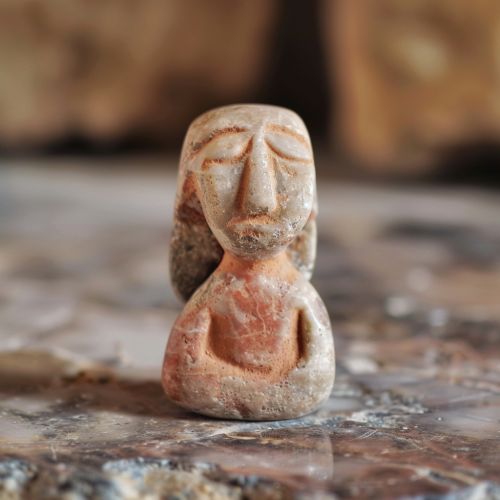Venus of Willendorf
Discovery and Origin
The Venus of Willendorf is a small, prehistoric figurine discovered in 1908 by archaeologist Josef Szombathy near the town of Willendorf in Austria. The figurine, carved from oolitic limestone not native to the region, is believed to have been created during the Paleolithic Age, specifically the Upper Paleolithic or Late Stone Age, between 28,000 and 25,000 BCE. The Venus of Willendorf is one of the oldest known examples of prehistoric art and is considered a masterpiece of the Paleolithic era.


Description
The Venus of Willendorf stands at approximately 11.1 centimeters in height and is devoid of facial features, with her head covered in a series of braided or plaited patterns that may represent a woven hat or hairstyle. The figure's body is characterized by pronounced, exaggerated features, including large breasts, a rounded belly, and wide hips, which are believed to symbolize fertility and abundance. The figure's arms are folded over her breasts, and her feet are small and rendered without detail. The figurine is also tinted with red ochre, a natural pigment commonly used in prehistoric art.
Interpretation and Significance
The interpretation of the Venus of Willendorf has been a subject of debate among historians and archaeologists. The figurine's exaggerated physical features have led many to believe that she represents a "mother goddess" or fertility symbol. However, others argue that the figurine could represent an individual woman, a symbolic representation of ideal female beauty in the Paleolithic era, or even a form of prehistoric pornography. Despite these varied interpretations, the Venus of Willendorf remains a significant artifact in the study of prehistoric art and culture, providing valuable insights into the societal and cultural norms of the time.
Influence and Legacy
The Venus of Willendorf has had a profound influence on the study of prehistoric art and culture. The figurine has become an icon of prehistoric art, and her image is frequently used in textbooks and educational materials related to archaeology, art history, and anthropology. The Venus of Willendorf has also inspired contemporary artists and has been referenced in various forms of popular culture, demonstrating her enduring relevance and appeal.
